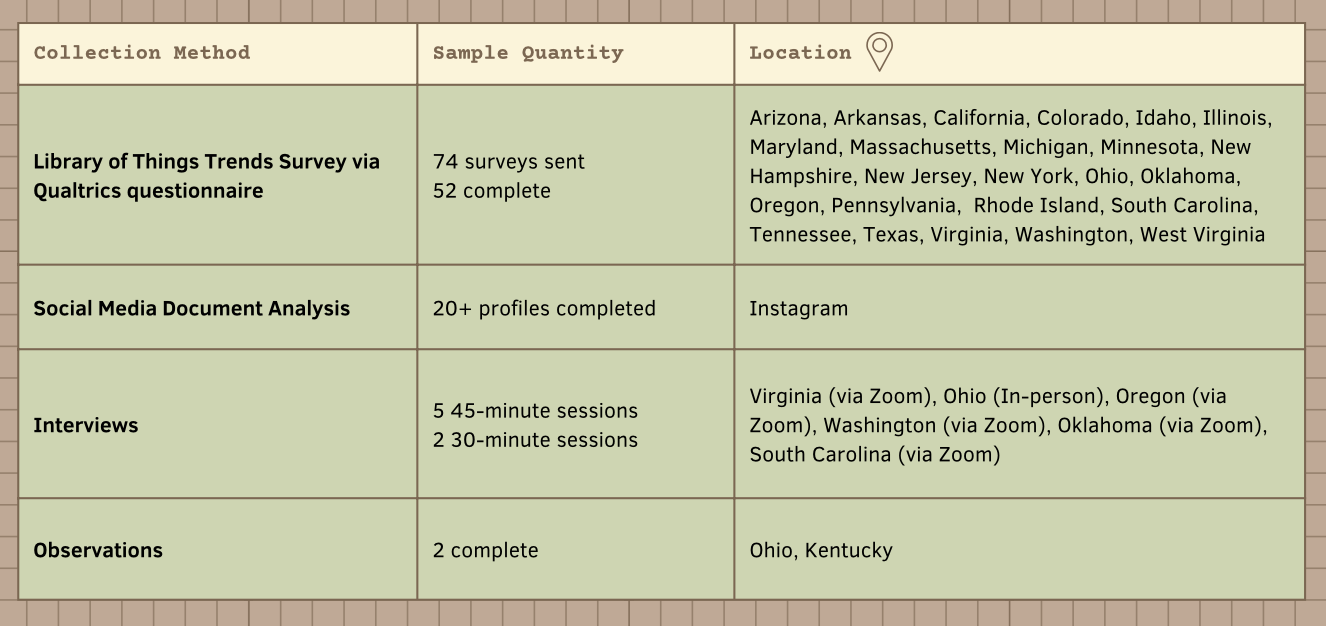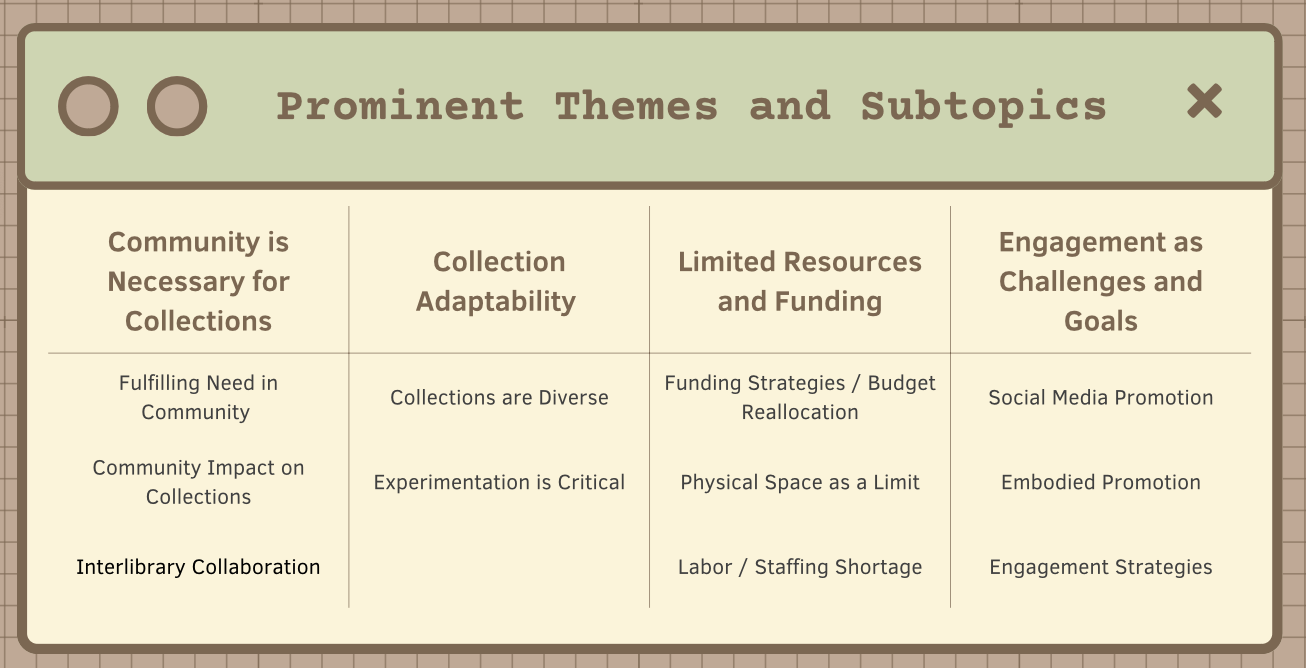Can you build a boat with your library card? Can you borrow a compass?
Libraries in the United States have consistently expanded their roles to fulfill their need for meaning in society. These institutions, which started off as private repositories of information, focused on assisting and assimilating the masses then moved to being a “cultural concern of the middle classes” (Söderholm & Nolin, 2015, p. 245), are again wrestled with the opportunity of redefinition. Can they answer yes to questions above? Some libraries are meeting needs by introducing innovative models for thing-lending, also known as Library of Things (LoT).
LoT collections have re-emerged as a strategy that many public libraries use to adapt to the ever changing needs of their communities. Yet there is little generalizable information existing on these collections and how they are managed long-term, despite existing in the U.S. since at least the 1930's. Our research team instead focused on identifying attributes and trends in LoTs that may establish guidance to successful long-term operation.
Participant enthusiasm in our work led us to seek out an efficient way to share the results of our research. In addition to our paper, we decided to create a website to share research and resources that we collected throughout the project, such as collection manuals. Additionally, we identified the need for tools to assist libraries in carrying out program evaluation and improvement strategies. Our hope is that by sharing our findings, others will be inspired to conduct further research on these collections and more public libraries will consider establishing a Library of Things collection.
In concluding our research we found that two distinct fleets of collections launched 1-5 and 5-10 years ago, while the We hope this research assists those with newer collections weather the waves as they, so creatively, seek the next shore.

Libraries in the United States have consistently expanded their roles to fulfill their need for meaning in society. These institutions, which started off as private repositories of information, focused on assisting and assimilating the masses then moved to being a “cultural concern of the middle classes” (Söderholm & Nolin, 2015, p. 245), are again wrestled with the opportunity of redefinition. Can they answer yes to questions above? Some libraries are meeting needs by introducing innovative models for thing-lending, also known as Library of Things (LoT).
LoT collections have re-emerged as a strategy that many public libraries use to adapt to the ever changing needs of their communities. Yet there is little generalizable information existing on these collections and how they are managed long-term, despite existing in the U.S. since at least the 1930's. Our research team instead focused on identifying attributes and trends in LoTs that may establish guidance to successful long-term operation.
Participant enthusiasm in our work led us to seek out an efficient way to share the results of our research. In addition to our paper, we decided to create a website to share research and resources that we collected throughout the project, such as collection manuals. Additionally, we identified the need for tools to assist libraries in carrying out program evaluation and improvement strategies. Our hope is that by sharing our findings, others will be inspired to conduct further research on these collections and more public libraries will consider establishing a Library of Things collection.
In concluding our research we found that two distinct fleets of collections launched 1-5 and 5-10 years ago, while the We hope this research assists those with newer collections weather the waves as they, so creatively, seek the next shore.



